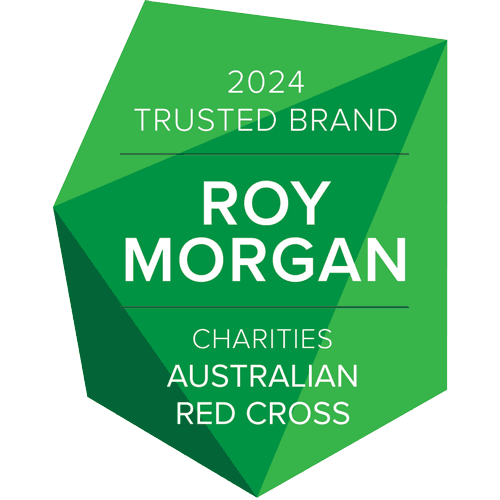Our recommended reads for 2022
Here are some of our favourite reads of 2022, brought to you by the Australian Red Cross + Readings book club on the laws and impact of war.
The story of Bill and his best friend
Every week Red Cross visitor Matt swaps stories and jokes with Bill. Those visits are the highlight of Bill’s week, bringing joy and laughter to his twilight years.
How my mum escaped Ukraine and made it to Darwin
My mum, Olena, has spent her whole life in Ukraine. She had her own home, a great job and good friends. But when our country descended into chaos, she had to give it all up to find safety.
Flood Relief Additional Support Grant
An update on our flood grants in response to the March 2022 Queensland and NSW floods.
Olympics, cuppas and a yarn
Celebrating the International Day of Older Persons with the stories of three women's contribution and resilience.
The road to recovery
Months on from the Queensland and New South Wales floods, communities are rebuilding and recovering with the support of Red Cross teams.
The value of preparing for a disaster or emergency
As Australians get prepared for another La Niña event, fresh evidence has emerged of the value of preparing for a disaster or emergency.
Renewed hope for a world without nuclear weapons
77 years on from the bombing of Hiroshima and Nagasaki.
World Day Against Trafficking in Persons
On World Day Against Trafficking in Persons (30 July 2022), let’s raise awareness that millions of men, women, and children around the world every day are subject to trafficking and slavery.
Queensland and New South Wales Floods Report
An update on our response to the Qld & NSW floods, from support in evacuation centres, to cash assistance, and long-term help on the recovery journey for tens of thousands.
From loss and grief to recovery
The Lismore floods hit hard, and ongoing support will be needed.
The support of volunteers in recovery
In the middle of one of the worst floods in Australia’s recorded history, the power of community and the miracle of life.
A slice of paradise
With support, Rese and her family are putting their haven back together after the floods.
A warm hug in hard times
As flood waters rose in Lismore, Polly found comfort at the evacuation centre.
When small actions make a big difference
After losing everything in the floods, Monica found relief in the generosity of Australians.
National Refugee Week: 10 Things You Can Do
This National Refugee Week (19-25 June 2022), here are ten simple and practical things you can do to be a champion for building an inclusive and welcoming Australia.
With an open heart, and open arms
Assadullah Khurrami from Australian Red Cross shares how open arms and open hearts can help enrich the diversity of Australian communities.
National Refugee Week 2022
We're recognising and celebrating the stories, resilience, and strength of people seeking asylum and refugees and their contributions to our local communities.
We crunched the numbers to find the most generous Australians
Years of donation data reveal who's the most kind-hearted.
The value of a teddy in times of trauma
How a simple gesture of kindness goes a long way to comfort children in a disaster.
International Humanitarian Law in a galaxy far, far away
Are the Ewoks civilians or combatants?
As people from Ukraine flee fighting, Red Cross teams are there
Providing support at train stations, border crossings and rest stops throughout their journey.
Tonga Red Cross is upskilling volunteers
Volunteer coordinator Amin Taumoefolau shares his story.
Humanitech Summit 2022
Australia’s leading Summit at the intersection of technology and humanity will put the spotlight on the pressing societal issues arising from technological progress.
Putting pieces back together after the floods
Diane and Derek on recovery after the Hawkesbury rains.
Inclusion and Diversity Change Program
We're identifying real and systemic changes we need to make.
Celebrating International Women’s Day
On International Women’s Day, Red Cross celebrates the contributions of women and girls. We acknowledge what we have achieved in gender equity, and we commit ourselves to the work that still needs to be done.
Celebrating Detta’s legacy
Australian nurse Bernadette Gleeson awarded the Florence Nightingale Medal for dedication in nursing
Connected Women
Comfort, support, and friendship – see how Connected Women is helping migrant women in the NT feel safe and valued
Charity donations of $2 or more to Australian Red Cross may be tax deductible in Australia. Site protected by Google Invisible reCAPTCHA. © Australian Red Cross 2025. ABN 50 169 561 394
